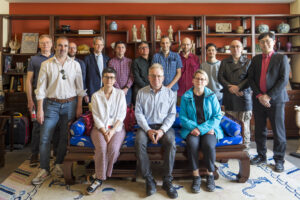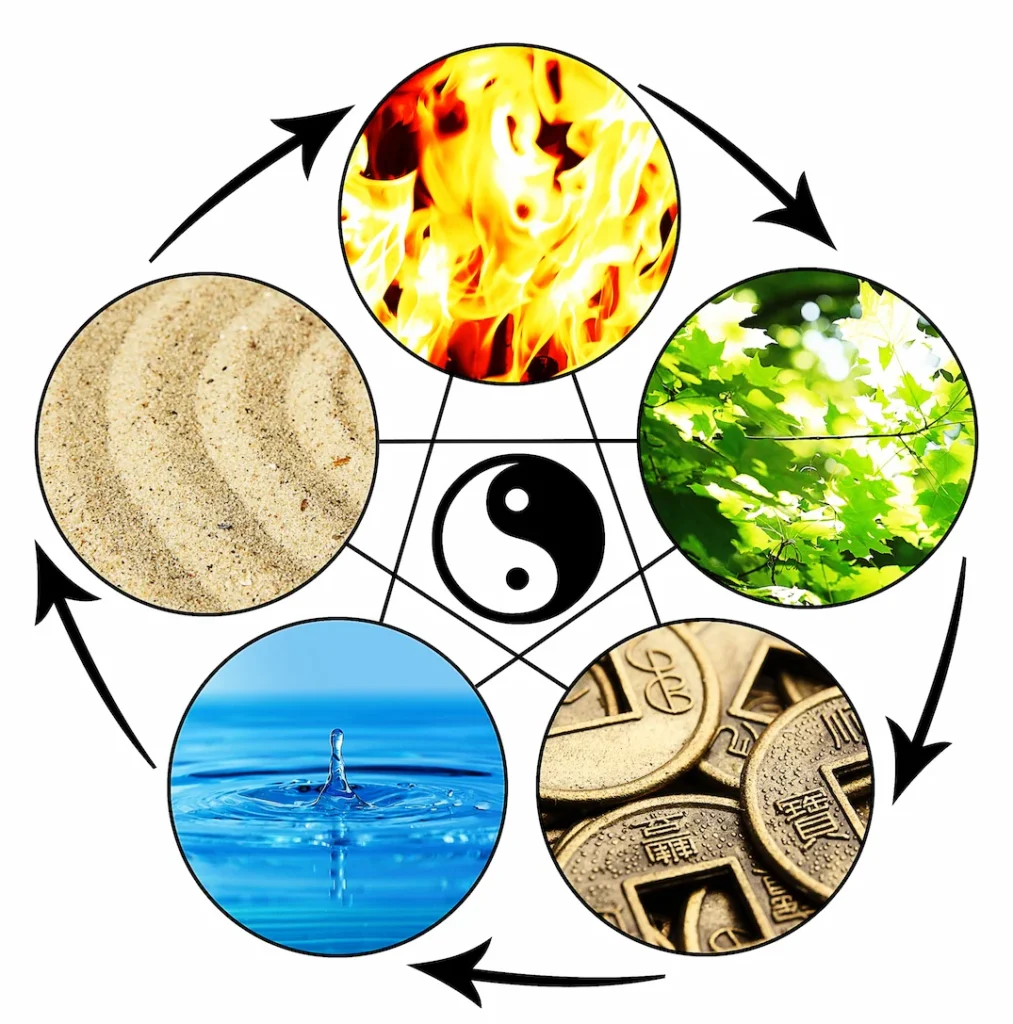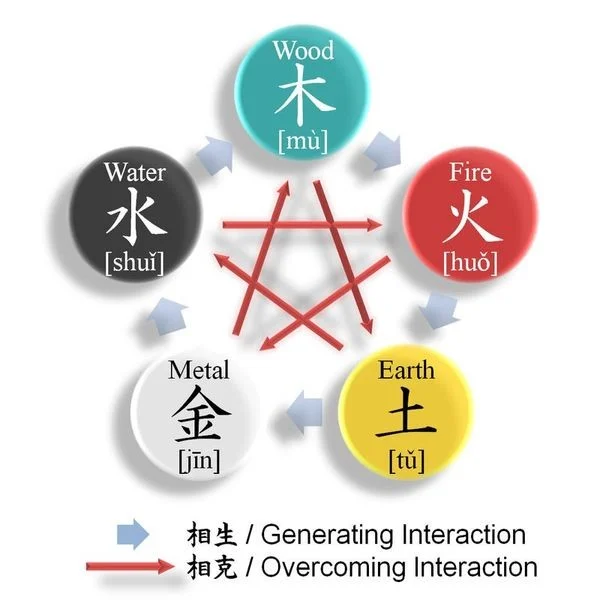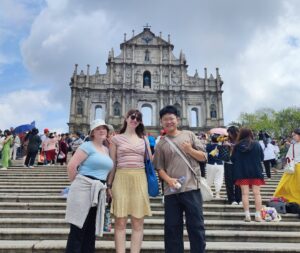Wood – rising, development (of an action), impulse, expansion, decampment
Fire – embodiment, definition, action, dynamic phase, design
Earth – alteration, transformation, transmutation, change
Metal – sinking, contraction, declining
Water – contemplation, calmness, (re-)consideration, observation, reflection
Wuxing is similar to the Greek four elements (fire, air, earth, and water), which were said to contain all the building blocks of matter. But when the Chinese talk about elements, they are talking about change and metamorphosis from one state to another. Each of the five elements represents an aspect of a dynamic process, which could explain the process of the universe. It says that everything in the universe goes through 5 phases perpetually in no particular order. Therefore, although Wuxing is popularly known as the five elements, it doesn’t describe the concept properly. It might be better to think of it as the five phases or cycles.
Wuxing also explains the relationship between these five phases. These phases describe the energy transformation from one state to another. Based on a particular directional energy flow from one phase to the next, the energy interaction can be destructive, expansive, or exhaustive. Practitioners with knowledge of each aspect of energy flow are able to apply certain cures or a rearrangement of energy in a way that is believed to be beneficial for the receiver in Feng Shui (风水) treatment.
Having become a distinct philosophical tradition during the Han dynasty, Wuxing gradually developed into a conceptual device that is used to explain not only cosmology, morality, and medicine, but virtually every aspect of Chinese life and Chinese thinking. Wuxing today as a developed thought has been incorporated into Chinese lives, including the way of space arrangement (Feng Shui), medicine, or to one’s date of birth.




